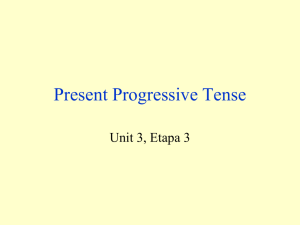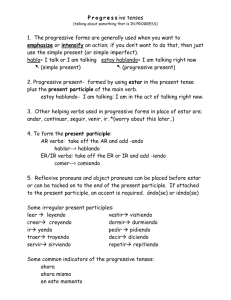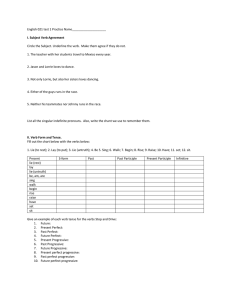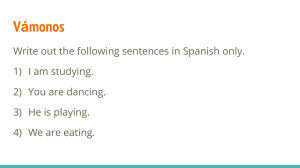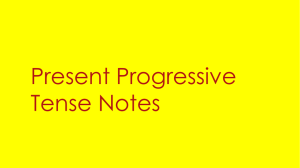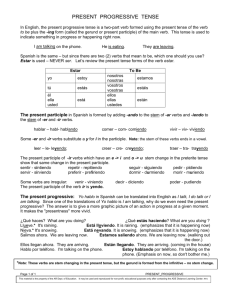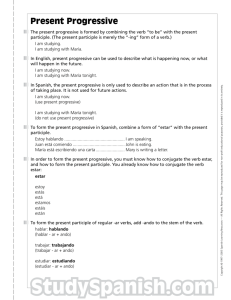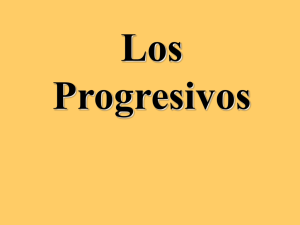Present Progressive Cheat Sheet
advertisement
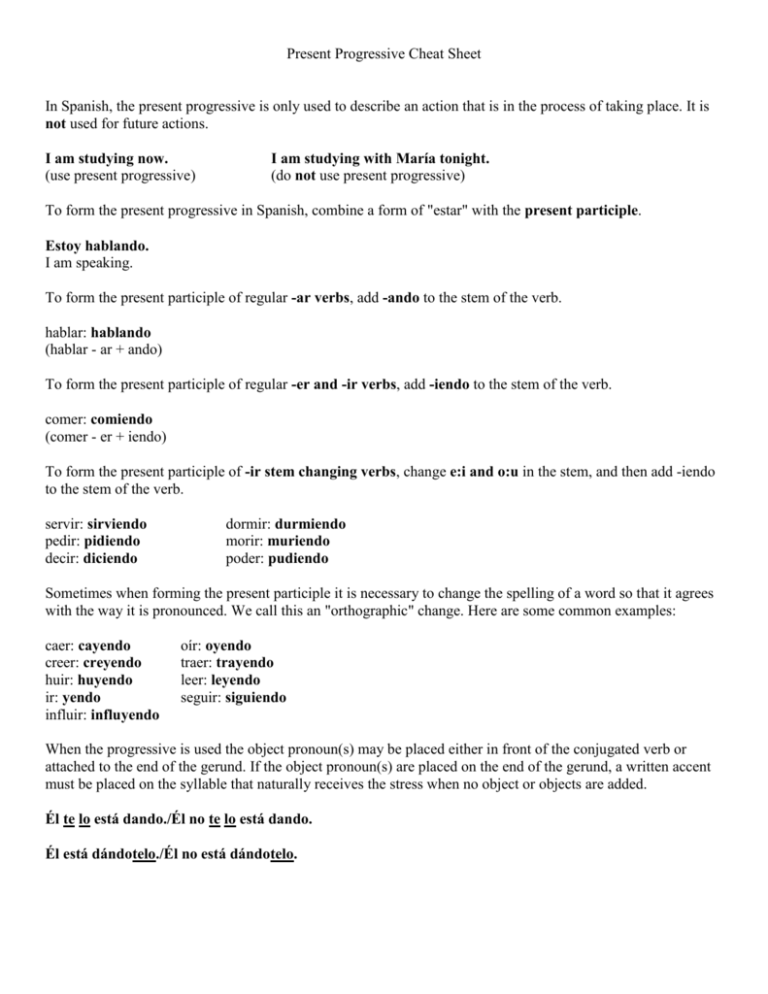
Present Progressive Cheat Sheet In Spanish, the present progressive is only used to describe an action that is in the process of taking place. It is not used for future actions. I am studying now. (use present progressive) I am studying with María tonight. (do not use present progressive) To form the present progressive in Spanish, combine a form of "estar" with the present participle. Estoy hablando. I am speaking. To form the present participle of regular -ar verbs, add -ando to the stem of the verb. hablar: hablando (hablar - ar + ando) To form the present participle of regular -er and -ir verbs, add -iendo to the stem of the verb. comer: comiendo (comer - er + iendo) To form the present participle of -ir stem changing verbs, change e:i and o:u in the stem, and then add -iendo to the stem of the verb. servir: sirviendo pedir: pidiendo decir: diciendo dormir: durmiendo morir: muriendo poder: pudiendo Sometimes when forming the present participle it is necessary to change the spelling of a word so that it agrees with the way it is pronounced. We call this an "orthographic" change. Here are some common examples: caer: cayendo creer: creyendo huir: huyendo ir: yendo influir: influyendo oír: oyendo traer: trayendo leer: leyendo seguir: siguiendo When the progressive is used the object pronoun(s) may be placed either in front of the conjugated verb or attached to the end of the gerund. If the object pronoun(s) are placed on the end of the gerund, a written accent must be placed on the syllable that naturally receives the stress when no object or objects are added. Él te lo está dando./Él no te lo está dando. Él está dándotelo./Él no está dándotelo.

